
Dropbox запустився з простим пояснювальним відео. Airbnb починав з оренди надувного матраца. Це не були випадкові постріли - це були розумні MVP. Згідно з методологією lean startup Еріка Ріса, розробка нового продукту починається з пошуку відповіді на запитання "Чи справді користувачам потрібен цей продукт?" Розробка MVP для стартапів допоможе вам це з'ясувати.
Що таке MVP?
MVP (мінімально життєздатний продукт, іноді помилково називається мінімально життєздатним продуктом або мінімальним ціннісним продуктом) — це продукт, який дозволяє отримати значний зворотний зв'язок від користувачів, зрозуміти, що їм потрібно, і уникнути створення чогось, що вони не будуть використовувати.
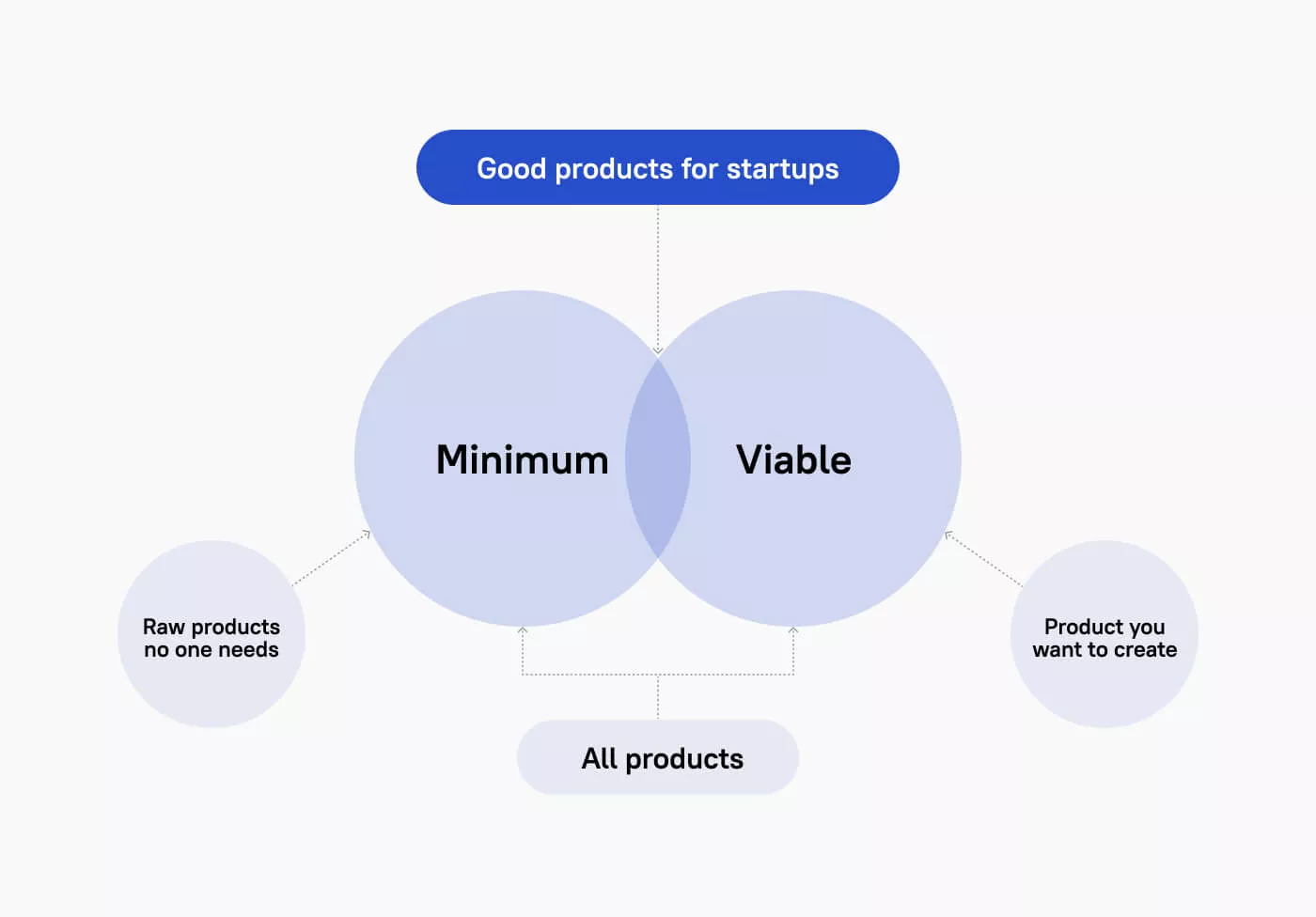
Згідно з цією концепцією, ідея вашого стартапу є гіпотезою. Щоб її перевірити, вам потрібно дотримуватися таких етапів розробки продукту стартапу:
- Чітко сформулюйте вашу гіпотезу.
- Визначте критерії, які будуть використовуватися для її перевірки.
- Створіть мінімально життєздатний продукт для тестування вашої гіпотези та запустіть його.
- Перевірте показники ефективності.
- Зробіть висновки та перевірте наступну гіпотезу, якщо це необхідно.
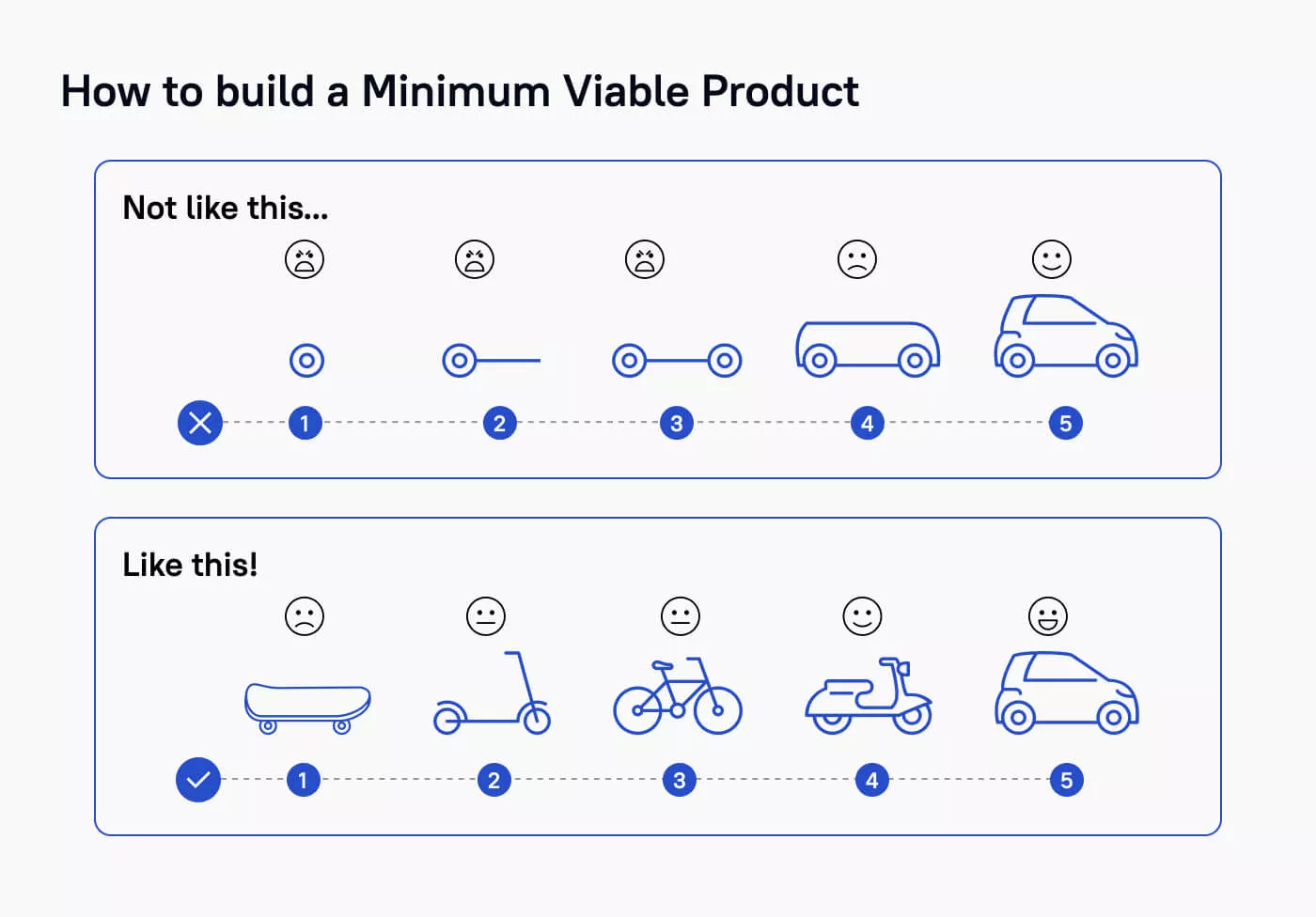
MVP для стартапів не означає продукт, який є сирим і був створений у поспіху. Мінімально тут означає, що на розробку витрачено мінімум часу, а сам продукт має лише ключові функції. Ці ключові функції відповідають гіпотезі, яку ви перевіряєте. Дослідження показало, що 60% функцій насправді ніколи не використовуються і, відповідно, не є життєво важливими для кінцевих користувачів. Концепція MVP дозволяє зменшити час запуску проекту стартапу, зосередившись лише на ключових функціях, і почати отримувати зворотний зв'язок про ваш продукт.
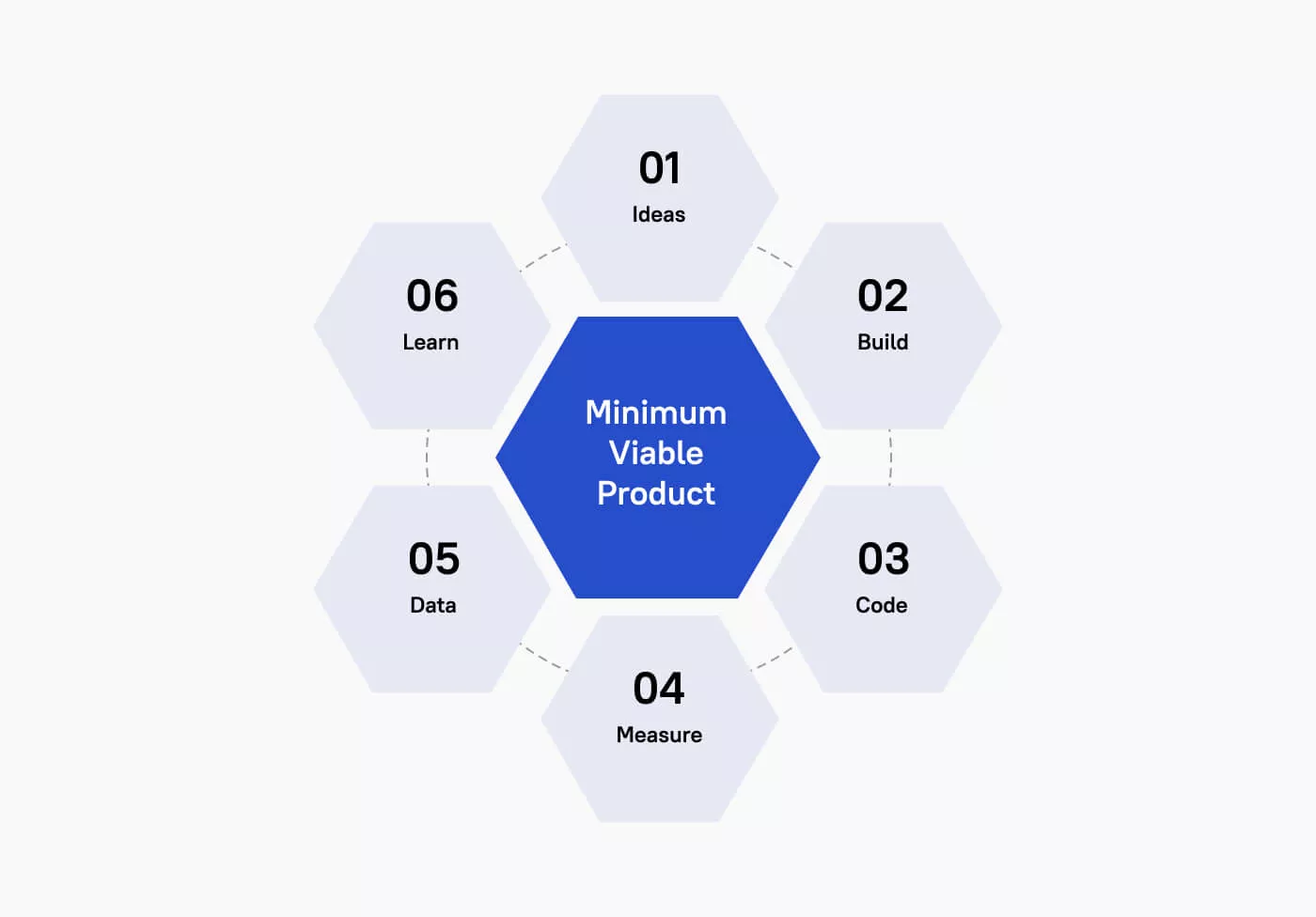
Але отримання зворотного зв'язку — це не фінальний етап. MVP є частиною lean-методології, яка базується на дотриманні повторювального циклу розробки, вимірювання, навчання і отримання зворотного зв'язку. Тому наступним кроком буде покращення вашого продукту на основі зворотного зв'язку від користувачів та повторне тестування. Якщо все йде за планом, ви можете створити повноцінний продукт і почати завойовувати ринок.
Чому потрібна розробка MVP для стартапів?
Навіть найунікальніша ідея є просто концепцією, а не готовим продуктом. Створюючи MVP, ви можете:
- Економте гроші, не інвестуючи в проекти, які приречені на провал.
- Перевірте, чи є продукт, який ви уявляли, привабливим для користувачів.
- Визначте за допомогою ітерацій, який з можливих напрямків розробки призведе ваш продукт до успіху.
- Зберіть інформацію про потенційних клієнтів та знайдіть ранніх прихильників вашого продукту (також відомих як "маякові клієнти").
Стів Бланк, автор методології розвитку клієнтів, стверджує, що основна причина, чому багатообіцяючі проекти не досягають успіху, полягає в тому, що вони не інвестують час і зусилля в глибоке розуміння своїх клієнтів. Замість того, щоб дізнатися про їх життєво важливі потреби через розробку та запуск MVP, засновники стартапів зациклюються на вдосконаленні початкової ідеї, яка не була протестована в реальному світі.
Ви також можете прочитати Чому вам потрібно провести дослідження для вашого продукту.
Компанії, які починали як MVP-продукти
Spotify
Розробники MVP Spotify зосередилися на основній функції: онлайн-стрімінг музики. Після вивчення результатів бета-тестування закритого додатку для Windows розробники змогли укласти угоди з великими звукозаписними компаніями та отримати значні інвестиції для свого стартапу. Сьогодні, з 60 мільйонами активних користувачів, Spotify коштує 8.4 мільярда доларів.
Spotify MVP
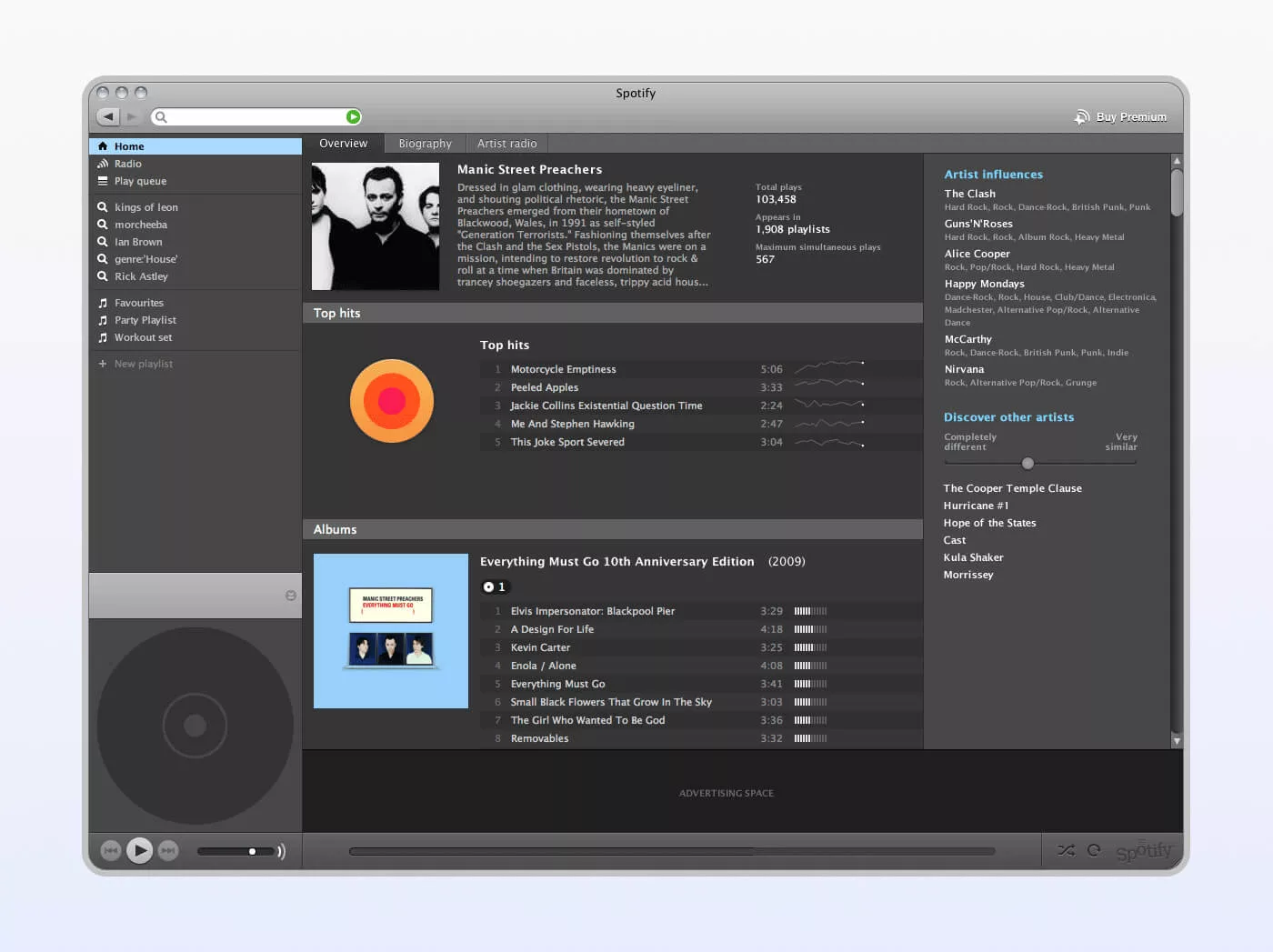
Spotify сьогодні
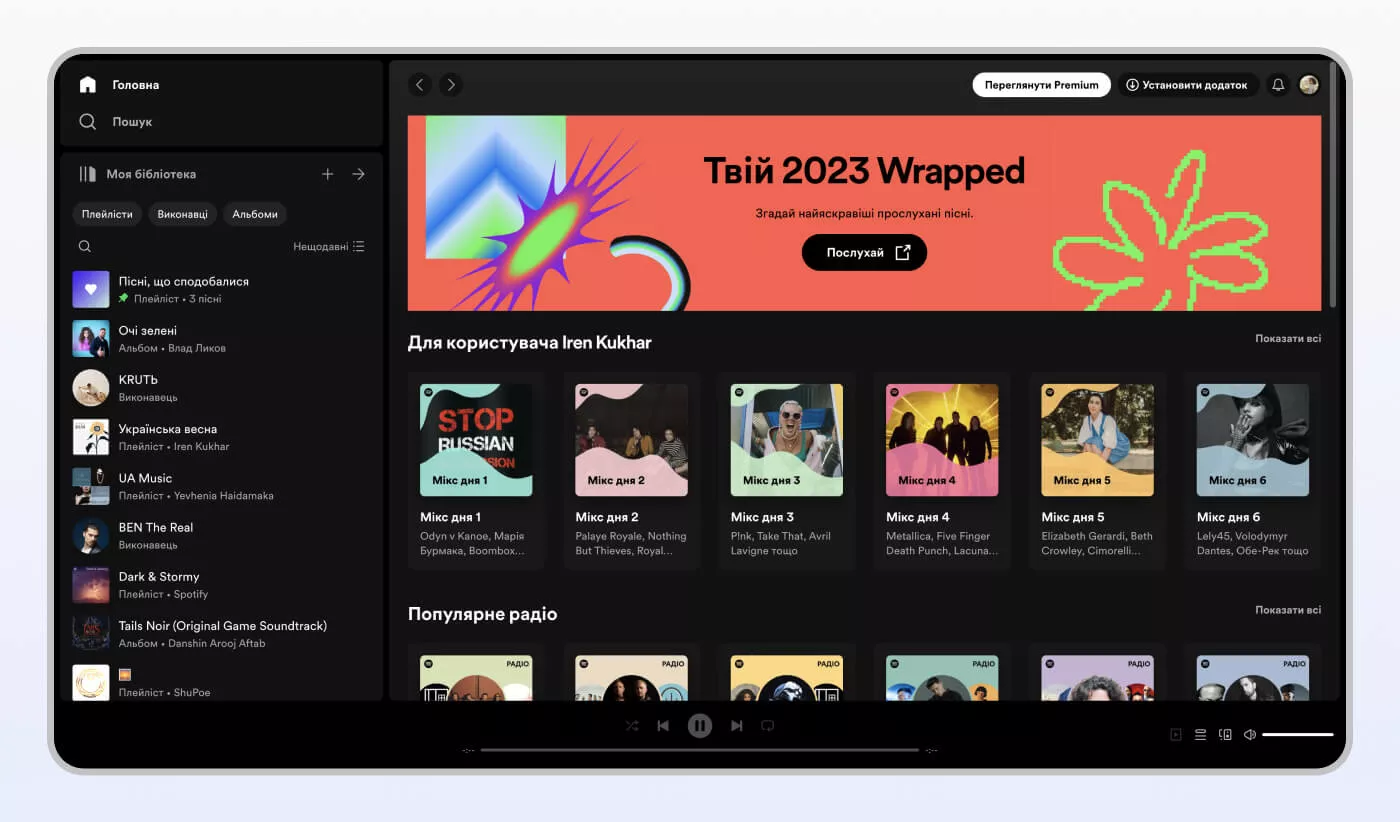
Spotify також є одним з найбільших веб-сайтів, які використовують PHP-фреймворк Symfony2.
Foursquare
MVP продукт Foursquare мав лише одну функцію: реєстрацію та значки за них. Після вивчення реакції користувачів розробники MVP почали розширювати продукт і додали рекомендації та путівники по містах. Сьогодні сервіс об'єднує 50 мільйонів людей, які здійснили 8 мільярдів реєстрацій.
Foursquare MVP

Foursquare сьогодні
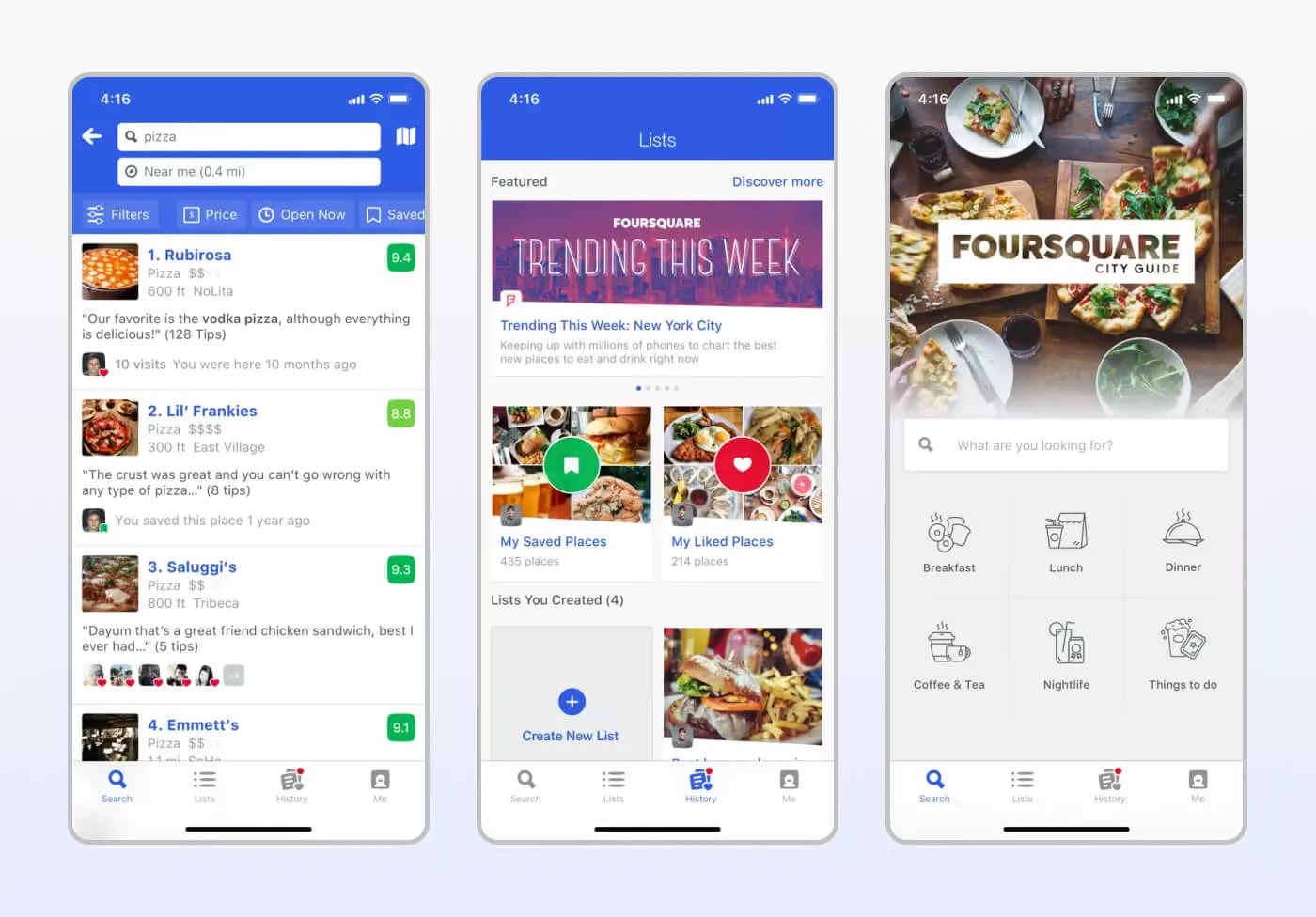
Airbnb
Сервіс, що пропонує короткострокову оренду для мандрівників, почався з того, що його власники здали свою квартиру кільком учасникам конференції дизайнерів у Сан-Франциско. Вони зробили фотографії місця, щоб створити MVP у формі простого веб-сайту, і незабаром почали приймати гостей. Таким чином, засновники стартапу змогли перевірити, чи буде їхня ідея короткострокової оренди цікавою для користувачів.
Airbnb MVP
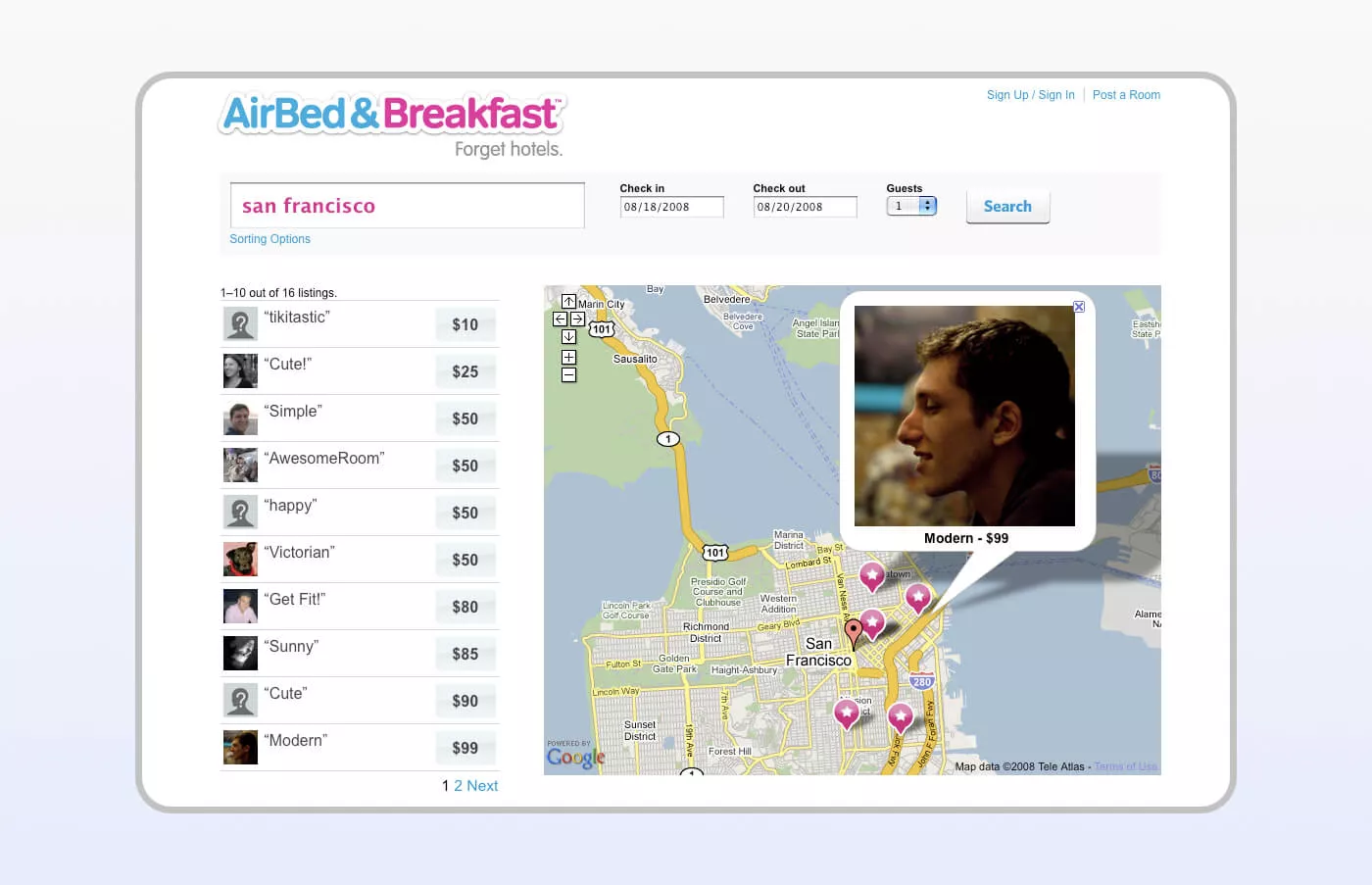
Airbnb сьогодні
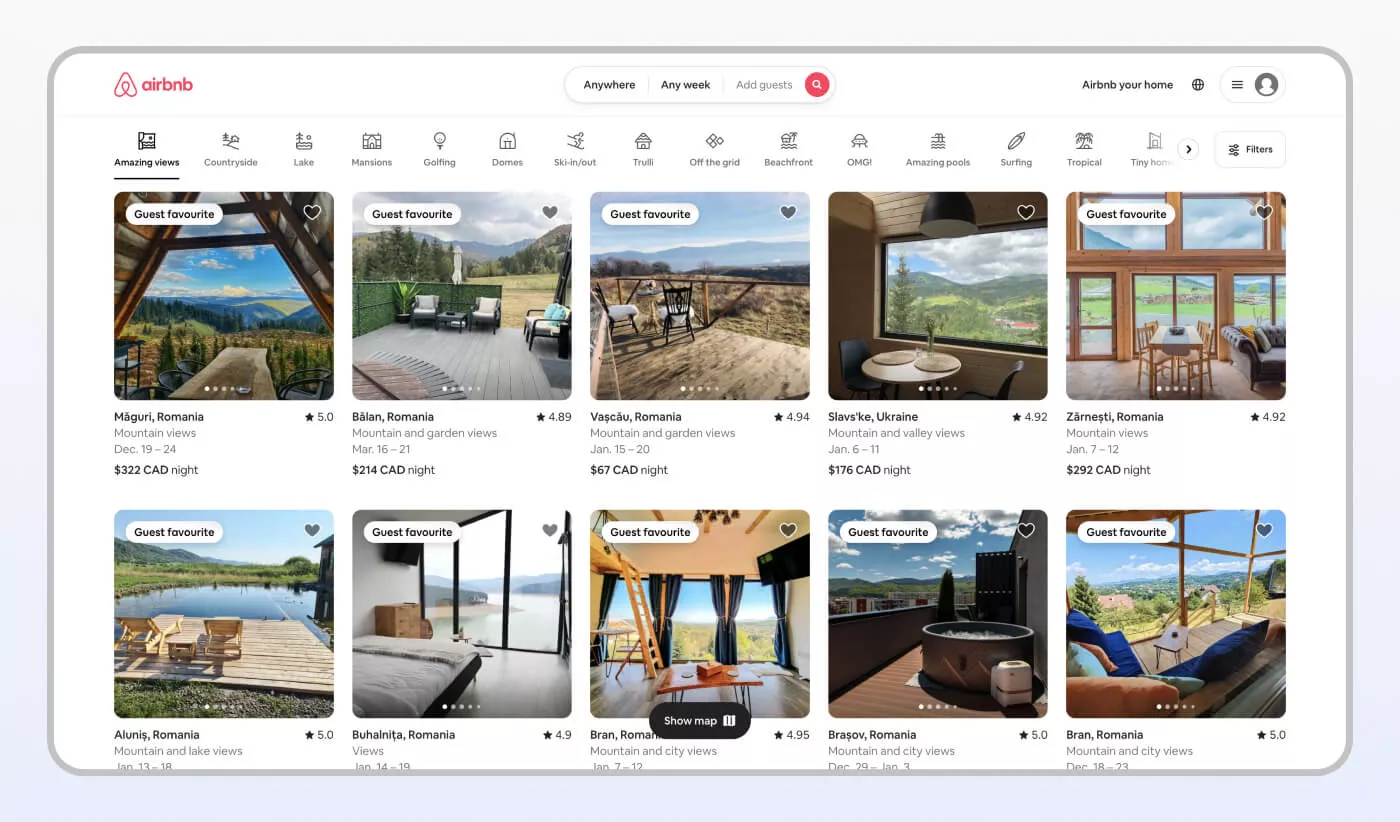
Groupon
Перш ніж перевірити свою гіпотезу про групові знижки, творці Groupon запустили веб-сайт під назвою The Point, метою якого було знайти однодумців для досягнення певної мети, яку не можна досягти інакше. Але ідея потребувала більшої концентрації. Тому засновники Groupon створили налаштований блог на Wordpress, щоб вручну публікувати інформацію про групові знижки. Після того, як користувачі підписувалися на конкретну знижку, PDF-файл надсилався на їхню електронну адресу. Таким чином, засновники Groupon змогли протестувати свою гіпотезу (користувачам подобається ідея отримати вигідну угоду) з мінімальними зусиллями та інвестиціями.
The Point, перший MVP Groupon
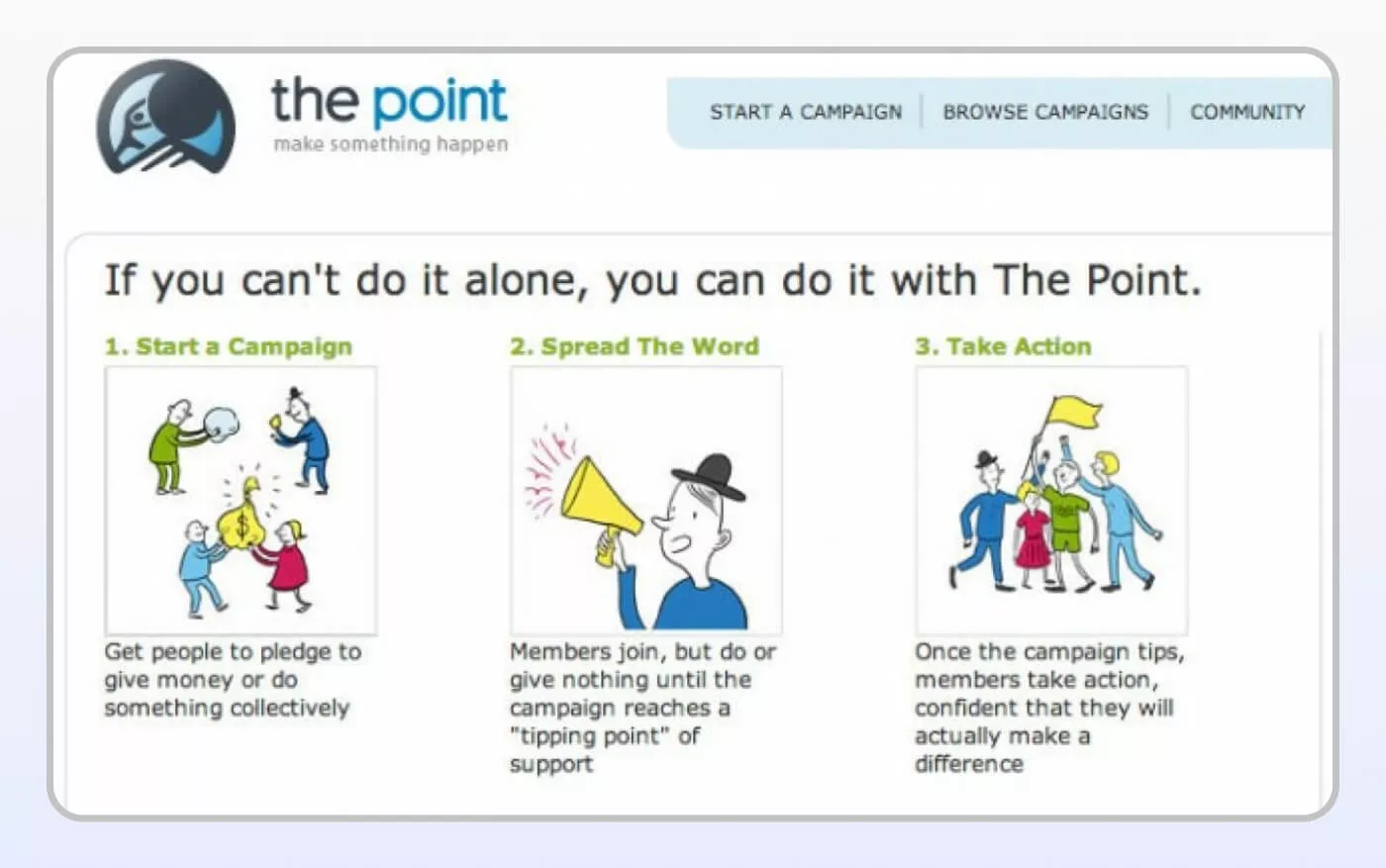
Groupon сьогодні
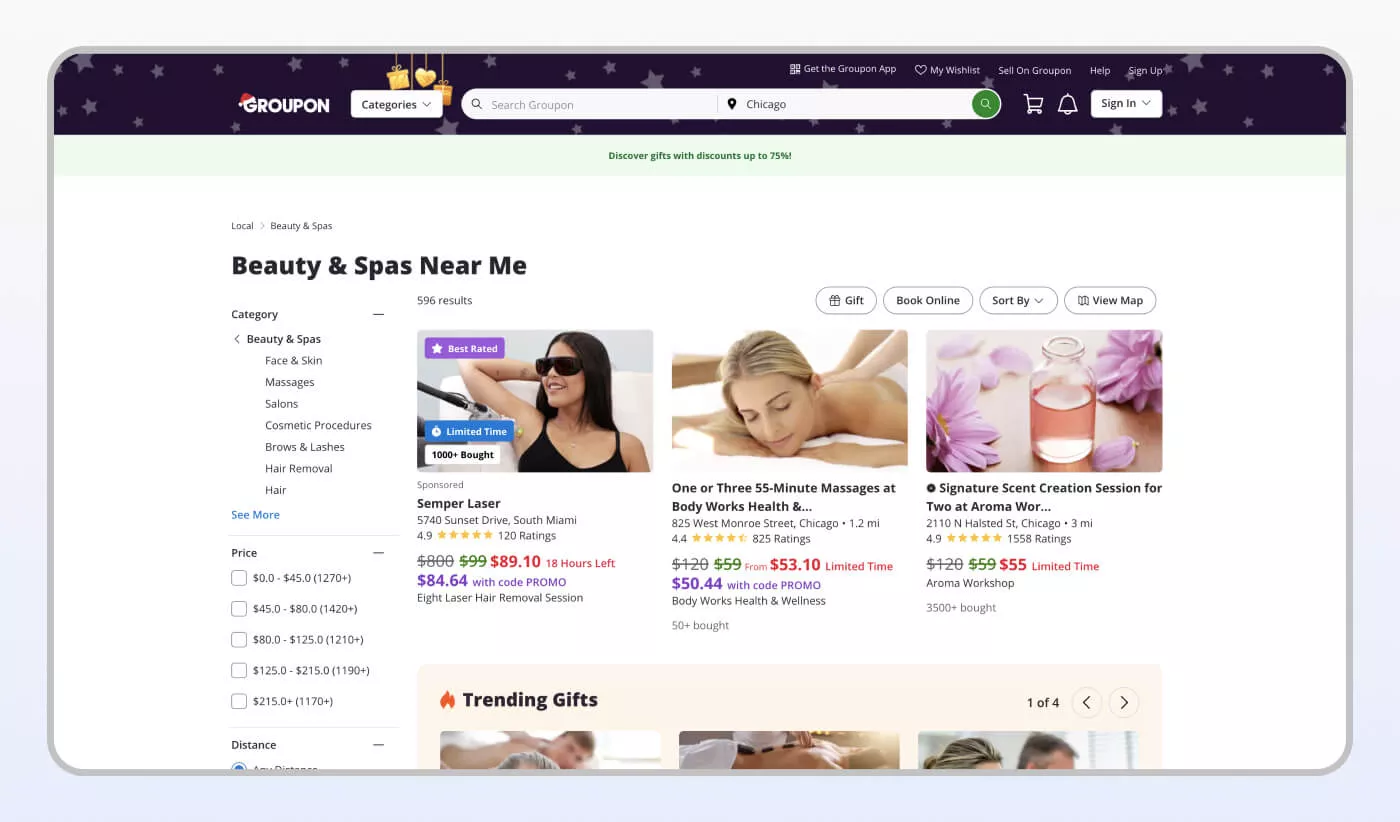
MeinFernbus
Сьогодні MeinFernbus є провідною компанією на ринку далекого автобусного перевезення в Німеччині. У 2015 році MeinFernbus об'єднався з іншою компанією, охоплюючи 76% відповідного ринку. Але розробка MVP для стартапу, яку ми здійснили разом з IT-командою MeinFernbus, була досить простою:
- Користувач переходить на веб-сайт.
- Вибирає маршрут і дату.
- Купує квиток.
- Роздруковує його.
- Показує квиток під час посадки в автобус.
MVP дозволяв купувати квитки лише на кілька автобусів, що курсують між Фрайбургом і Мюнхеном. Деякі операції виконувалися вручну, і користувачі могли платити лише євро.
Коли MVP успішно пройшов практичну перевірку, ми почали його розширювати:
- Стало можливим резервувати місця для велосипедів, використовувати ваучери, повертати квитки та вносити зміни до них.
- Кількість маршрутів зросла, і архітектура проекту була переписана для роботи з більшими навантаженнями.
- Був створений окремий портал для партнерів і агентств, а також ми розробили застосунки для Android та iOS.
Коли автобуси почали курсувати до Швейцарії, була додана підтримка швейцарського франка та нові варіанти оплати. Була створена складна система фінансової звітності. Сьогодні компанія продовжує використовувати процедуру купівлі квитків, яка була протестована з MVP, але під нею лежить зовсім інша і складна система.
MeinFernbus MVP
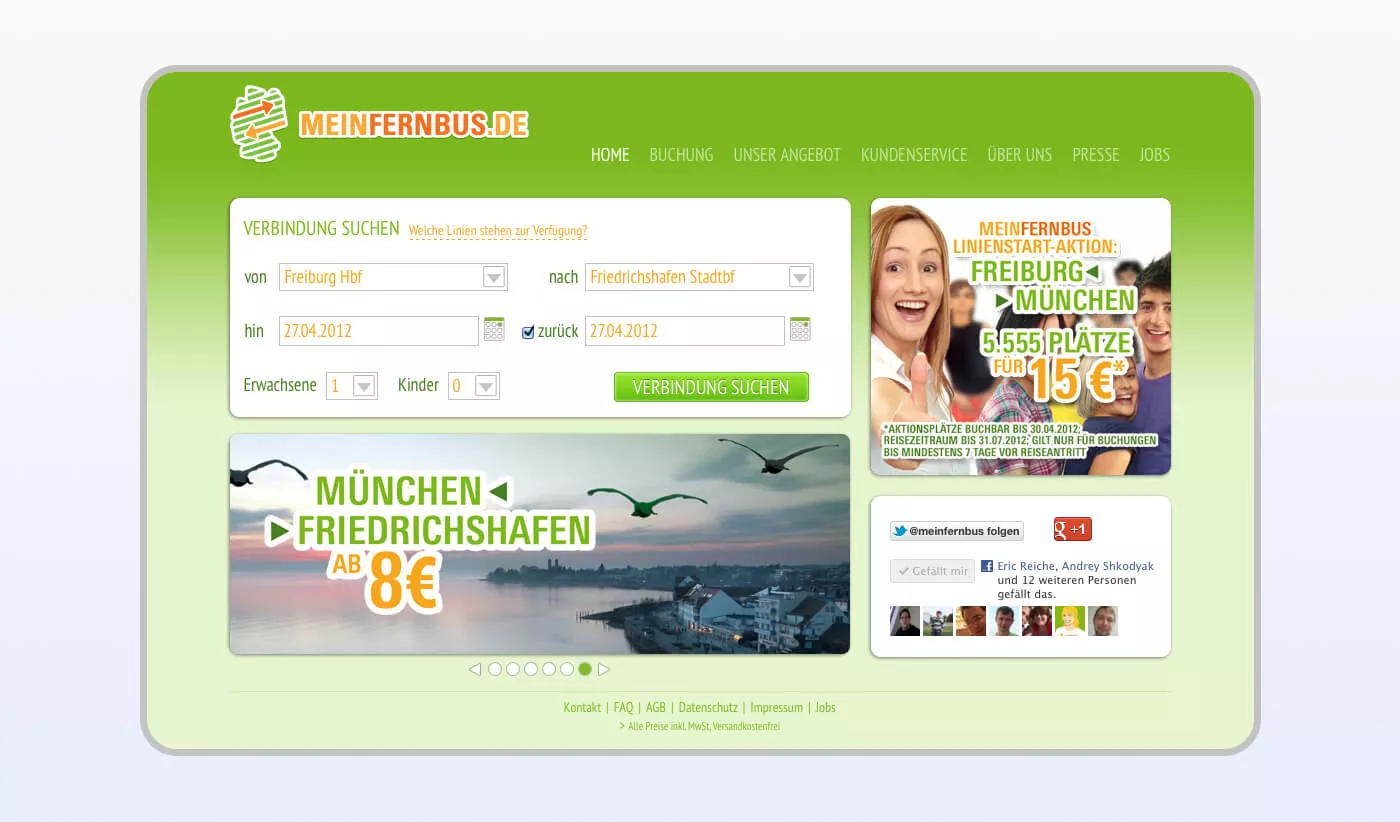
MeinFernbus сьогодні
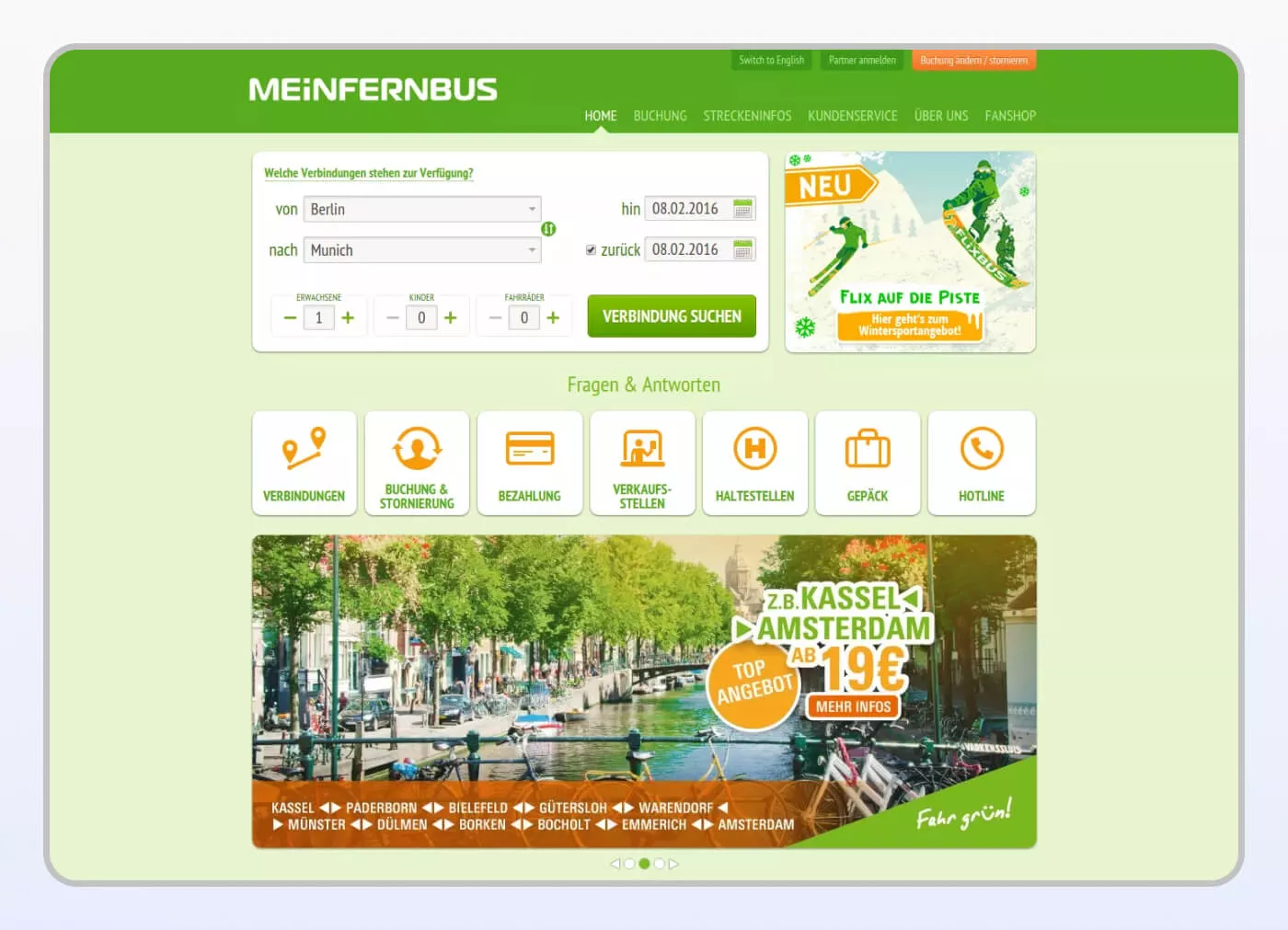
Дивіться наше дослідження, щоб дізнатися більше про проект MeinFernbus.
CourseYard
MVP для CourseYard був інструментом електронної публікації з можливістю форматування та вставки інтерактивного контенту.
MVP CourseYard

Ми також підготували зразок публікації та розробили Android-додаток для перегляду публікацій на ходу. Дивіться наше дослідження, щоб дізнатися більше про проект MVP CourseYard.
Згідно з дослідженням, яке вивчало 3200 швидкозростаючих мобільних та інтернет-стартапів, у 74% випадків причиною невдачі стартапу є передчасне масштабування: дохід компанії від нових користувачів виявляється нижчим за витрати, понесені на надання їм послуг. Ця проблема виникає через брак знань про потреби та вподобання цільової аудиторії. Але ви можете уникнути цього: замовте розробку MVP та налаштуйте свої початкові гіпотези стартапу відповідно до фактичних даних, отриманих з MVP.
Студія stfalcon.com пропонує послуги з розробки MVP для стартапів, веб- та мобільних продуктів. Зв'яжіться з нами, наша віддана команда буде рада допомогти вам створити MVP-рішення для стартапів.
Подолання труднощів у залученні інвестицій та сприянні зростанню є надзвичайно важливим для засновників стартапів на їх підприємницькому шляху. Отримайте доступ до нашого документу "Бізнес-моделі та ціноутворення", щоб мати можливість розкрити прихований потенціал вашої наступної стартап-ідеї.



